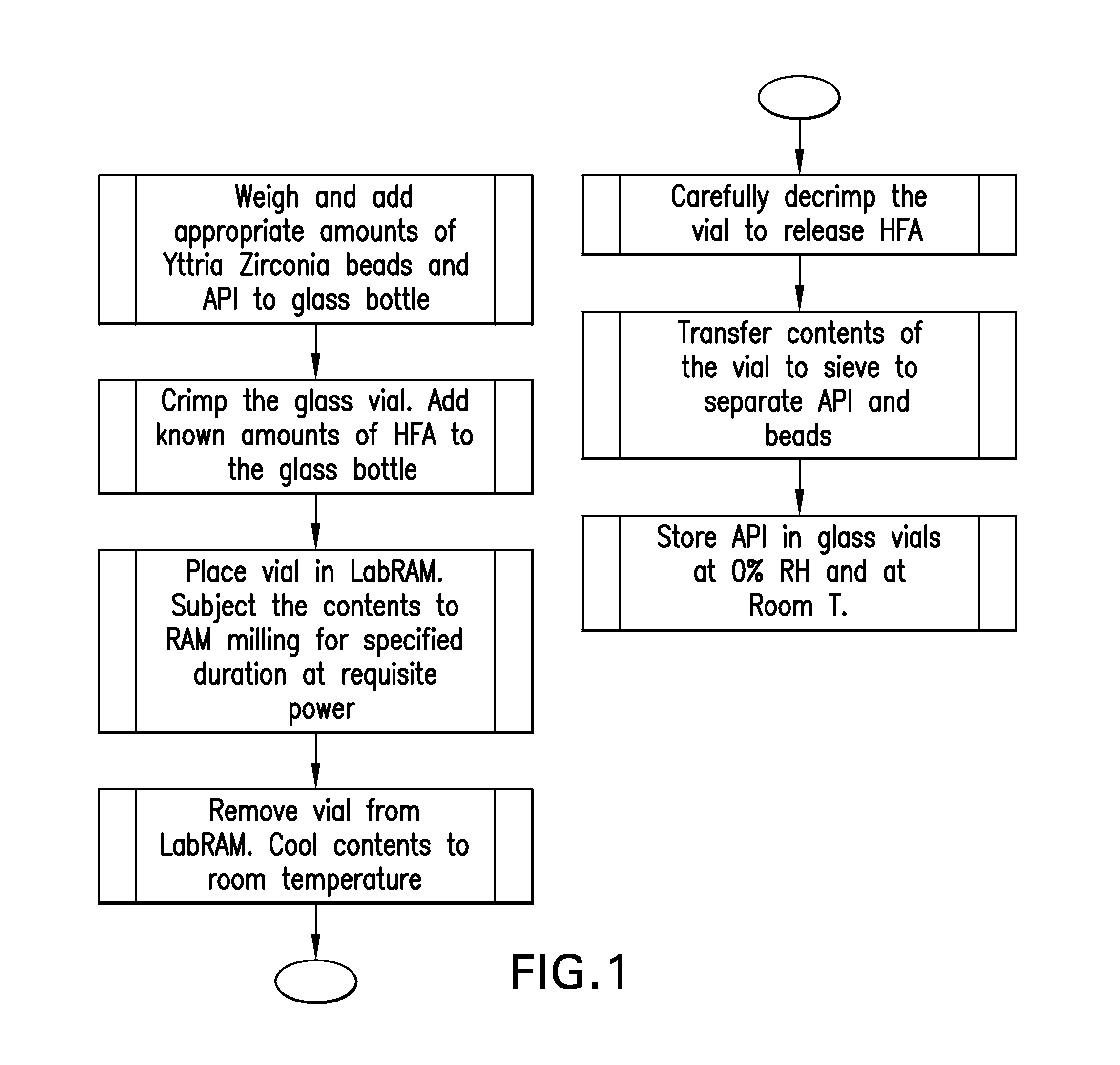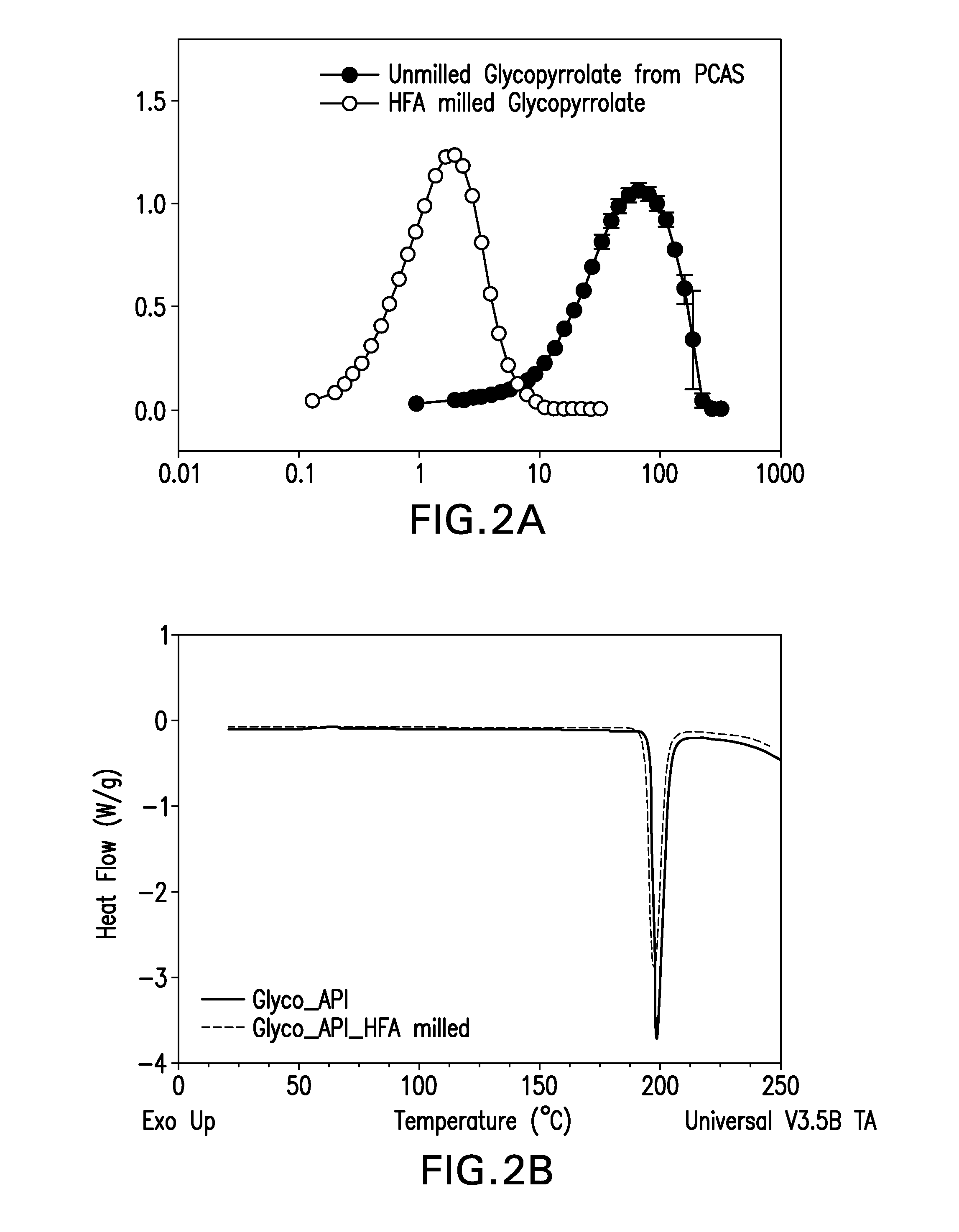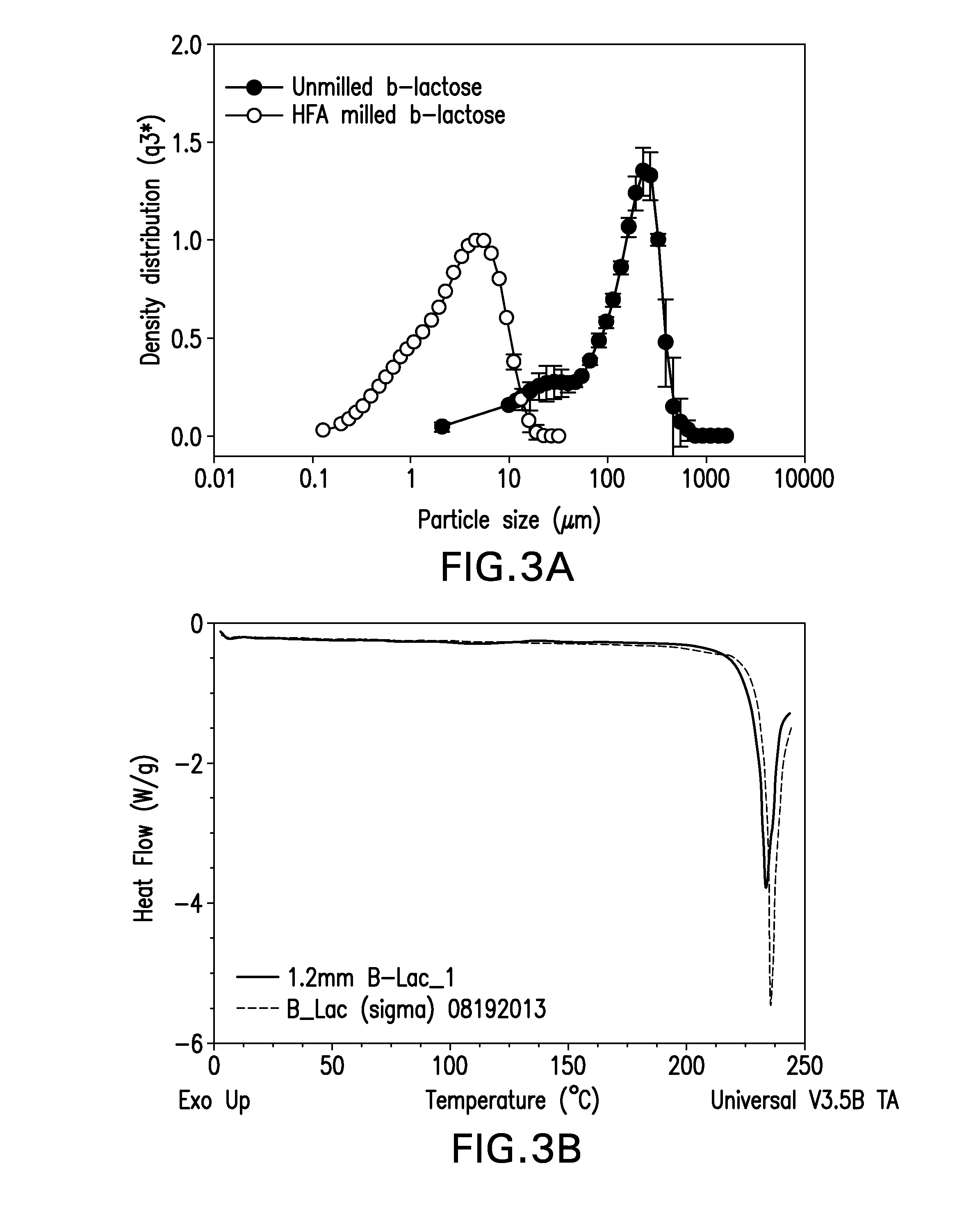Media milling process for the manufacture of active pharmaceutical ingredients in propellants
a technology of active pharmaceutical ingredients and propellants, which is applied in the direction of pharmaceutical product form change, grain treatment, dispersed delivery, etc., can solve the problems of inherently unstable amorphous form and undesirable change in the solid state of milled products, and achieve less amorphous content and high stability
- Summary
- Abstract
- Description
- Claims
- Application Information
AI Technical Summary
Benefits of technology
Problems solved by technology
Method used
Image
Examples
example 1
Glycopyrrolate (GP)
[0037]
TABLE 1Compendium of HFA227-milled GP at various processing conditions.PSD beforeHFA MillingPSD after HFA MillingAPI:BeadX50X90X50X90Power and timeratio (w / w)52.77 ± 1.54134.7 ± 9.93.49 ± 0.0215.93 ± 0.14 80% power; 60 mins2052.77 ± 1.55134.7 ± 9.102.62 ± .019.83 ± 0.0180% power; 105 mins2052.77 ± 1.54134.7 ± 9.91.53 ± 0.063.67 ± 0.0680% power; 90 min; 5 min stop10@4552.77 ± 1.55134.7 ± 9.101.74.53 ± 0.2180% power; 86 min2052.77 ± 1.56134.7 ± 9.111.73.87 ± 0.1280% power; 90 min; 5 min stop10@4552.77 ± 1.57134.7 ± 9.121.37 ± 0.133.67 ± 0.0380% power; 90 min; 5 min stop20@45; 10 min stop;90% power for additional 3 mins
[0038]In one embodiment of the invention, GP was subjected to HFA-based media milling using LabRAM. GP is a highly hygroscopic API whose instability under accelerated conditions of temperature and humidity (40° C. and 75% RH) has been widely documented. Typically, size reduction of GP is accomplished using conventional techniques like jet milling...
example 2
[0040]Lactose is an excipient that is FDA approved and is utilized as a carrier in dry powder inhalers. In one variation of the milling study, β-lactose (anhydrous) purchased from sigma-aldrich was subjected to HFA (HFA227) based media milling using LabRAM at a preset power of 80% and for a duration of 70 minutes. The ratio of YTZ beads (0.8 m) to β-lactose was maintained at 20:1. Particle size (X50) of β-lactose prior to HFA-based RAM milling was 153.6±7.4 μm. Upon subjecting the unmilled lactose to RAM-milling under the aforementioned conditions, the particle size (X50) of β-lactose was 3.47±0.01 μm.
[0041]In another embodiment of the study, the same β-lactose was subject to milling in HFA134a at a bead to lactose ratio of 40:1 for a 60 minute duration. The particle size (X50) of the recovered product was 2.3 μm. In both cases, DSC results indicated that the final product was crystalline.
[0042]Lactose monohydrate of different grades (ML001 and SV003) was purchased from DFE p...
example 3
Cyclodextrin (Captisol)
[0043]Cyclodextrin is a widely utilized pharmaceutical excipient used as a solubility enhancer and complexing agent in several formulations. Captisol subjected to HFA based LabRAM milling resulted in a size reduction of the excipient to 1.5 μm.
PUM
| Property | Measurement | Unit |
|---|---|---|
| size | aaaaa | aaaaa |
| bead size | aaaaa | aaaaa |
| particle size | aaaaa | aaaaa |
Abstract
Description
Claims
Application Information
 Login to View More
Login to View More - R&D
- Intellectual Property
- Life Sciences
- Materials
- Tech Scout
- Unparalleled Data Quality
- Higher Quality Content
- 60% Fewer Hallucinations
Browse by: Latest US Patents, China's latest patents, Technical Efficacy Thesaurus, Application Domain, Technology Topic, Popular Technical Reports.
© 2025 PatSnap. All rights reserved.Legal|Privacy policy|Modern Slavery Act Transparency Statement|Sitemap|About US| Contact US: help@patsnap.com



